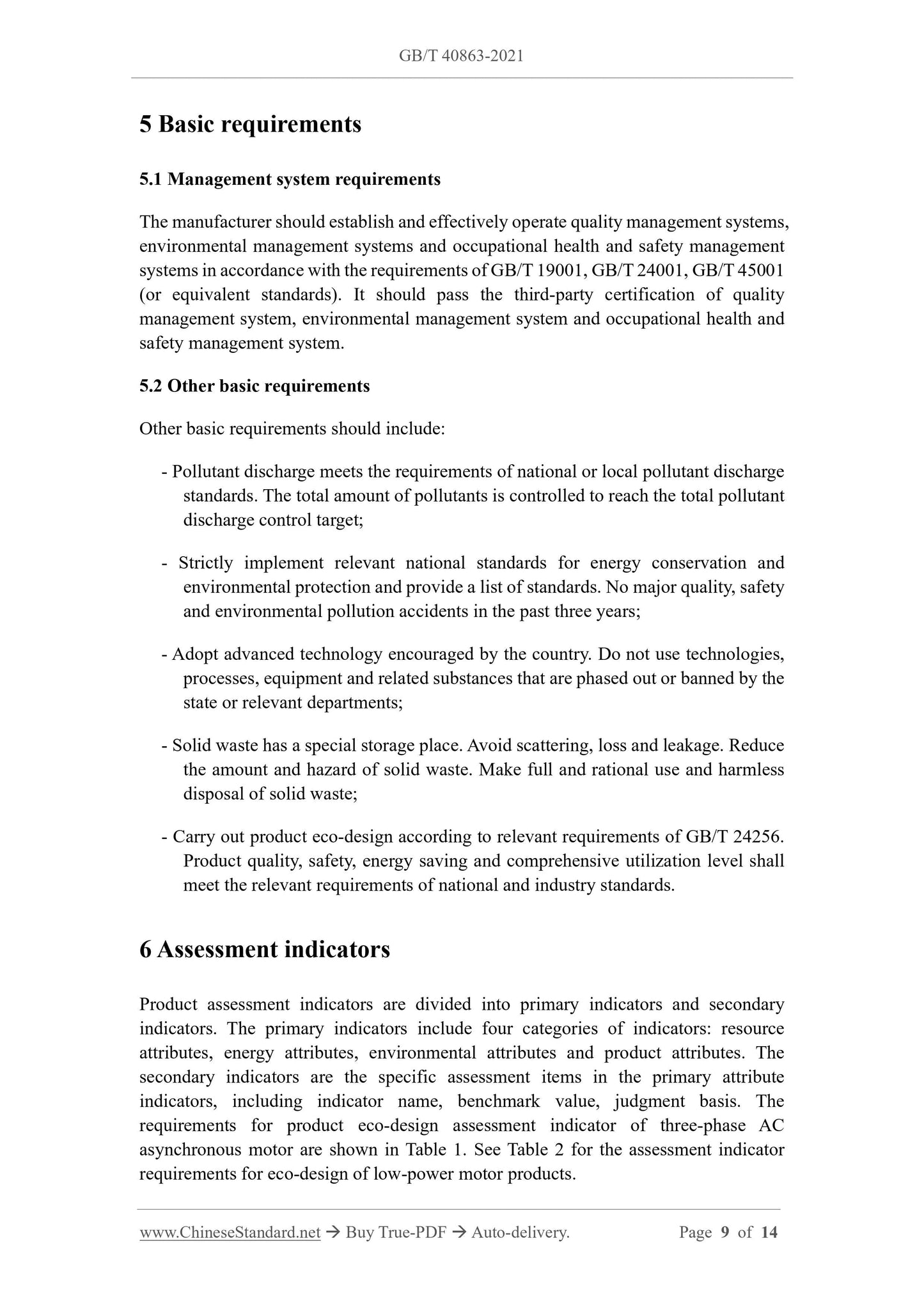1
/
of
7
www.ChineseStandard.us -- Field Test Asia Pte. Ltd.
GB/T 40863-2021 English PDF (GB/T40863-2021)
GB/T 40863-2021 English PDF (GB/T40863-2021)
Regular price
$155.00
Regular price
Sale price
$155.00
Unit price
/
per
Shipping calculated at checkout.
Couldn't load pickup availability
GB/T 40863-2021: Assessment technical specification for eco-design product - Motor products
Delivery: 9 seconds. Download (and Email) true-PDF + Invoice.Get Quotation: Click GB/T 40863-2021 (Self-service in 1-minute)
Newer / historical versions: GB/T 40863-2021
Preview True-PDF
Scope
This Standard specifies evaluation principles, methods and basis, basic requirementsand evaluation indicators for motor eco-design products.
This Standard applies to the following electric motor eco-design product evaluations:
- Small power motors that, when converted to 1500r/min, the maximum continuous
rated power does not exceed 1.1kW, and it meets the energy efficiency level of
IE3 and above in GB/T 32891.1-2016 or the energy efficiency level of level 2 and
above in GB 25958-2010;
- Low-voltage three-phase AC asynchronous motors that the power is
0.75kW~1000kW, in line with IE3 and above energy efficiency level in GB/T
32891.1-2016 (hereinafter referred to as "low-voltage motors");
- High-voltage three-phase AC asynchronous motors that the power is
160kW~25000kW, and it meets the energy efficiency level of level 2 and above
in GB 30254-2013 or meets the requirements of energy efficiency level of level
2 and above in JB/T 12729-2016 (hereinafter referred to as "high-voltage
motors").
NOTE: The overlapping part of the product power of the low-power motor and the low-voltage
motor is distinguished according to the product design application: Products for industrial use are
low-voltage motors, and products for household and similar use are low-power motors.
This Standard applies to products directly supplied to end users, as well as products that
are part of equipment.
This Standard does not apply to:
- Products used in explosive atmospheres (including potentially explosive
atmospheres);
- Products for special purposes such as aerospace, radiation resistance, and marine
use.
Basic Data
| Standard ID | GB/T 40863-2021 (GB/T40863-2021) |
| Description (Translated English) | Assessment technical specification for eco-design product - Motor products |
| Sector / Industry | National Standard (Recommended) |
| Classification of Chinese Standard | K04 |
| Word Count Estimation | 9,956 |
| Issuing agency(ies) | State Administration for Market Regulation, China National Standardization Administration |
Share













